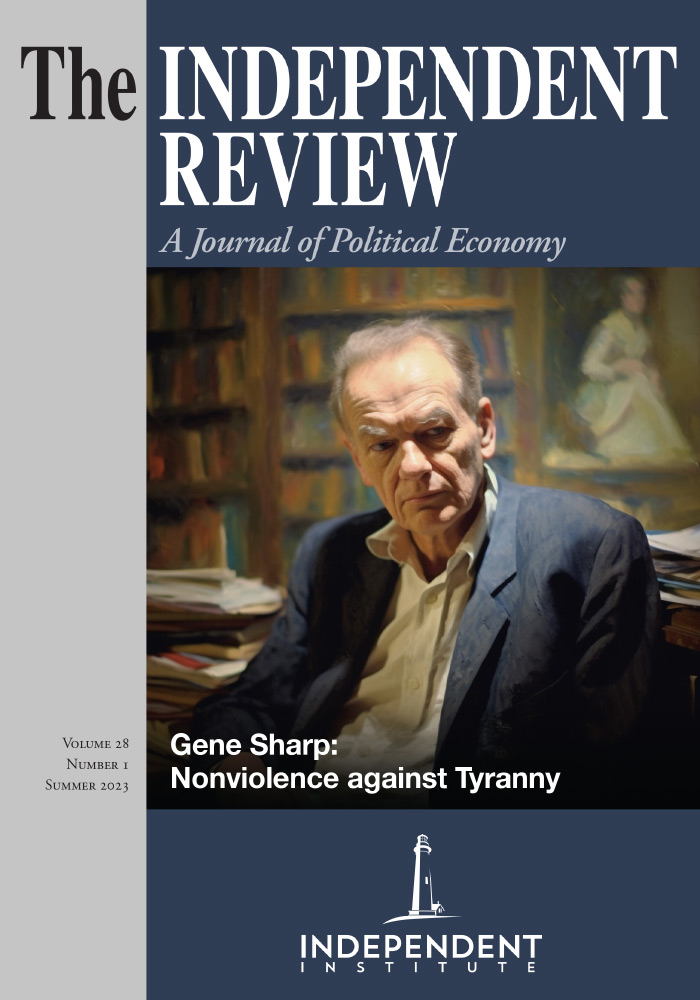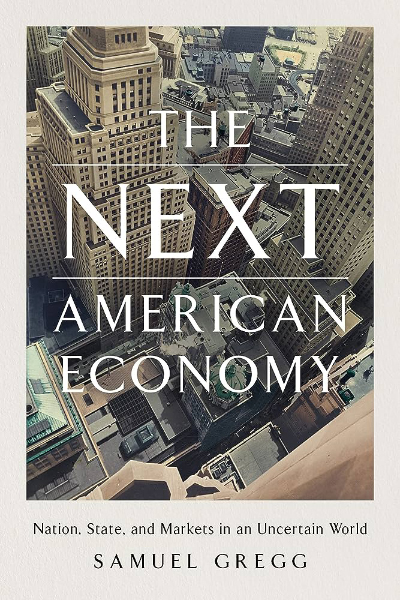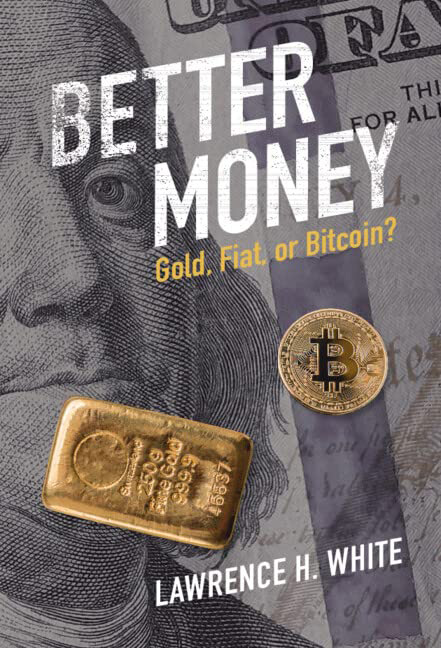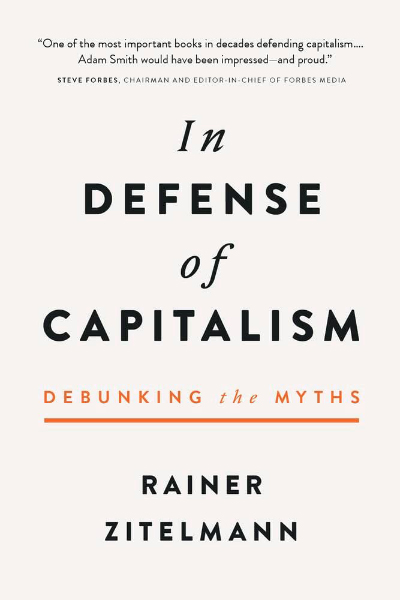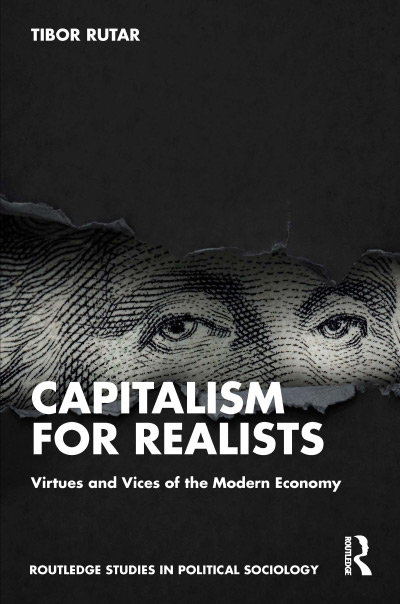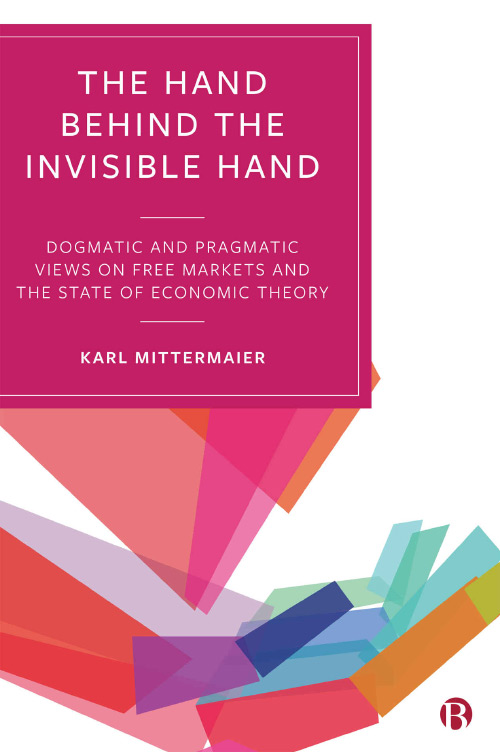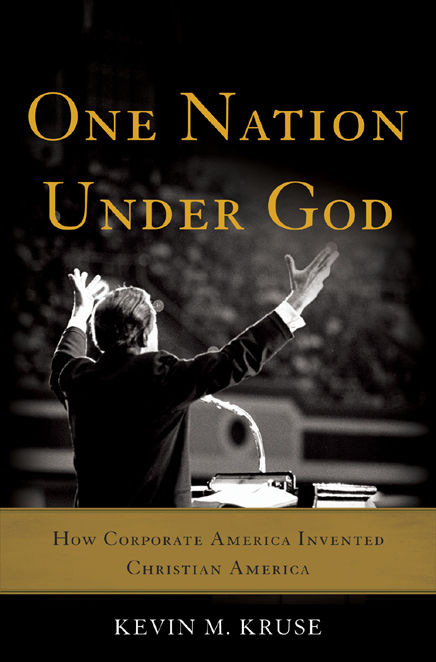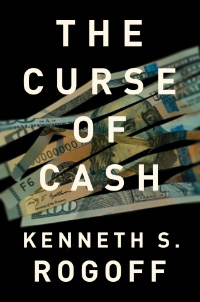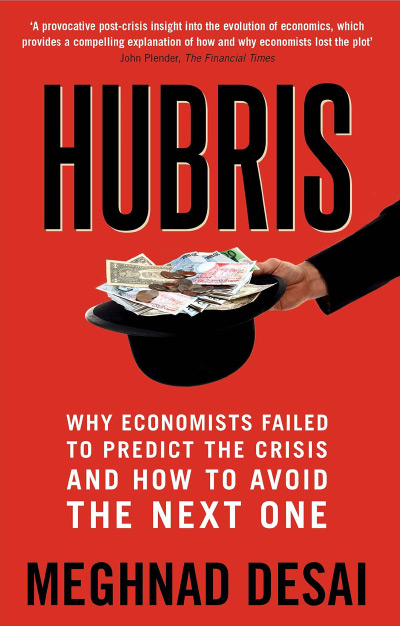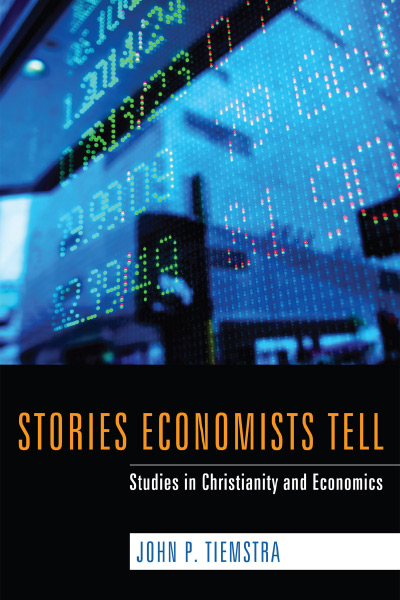T.S. Eliot writes, “We shall not cease from exploration; And the end of all our exploring; Will be to arrive where we started; And know the place for the first time.” (See 1943, Four Quartets, New York: Harcourt, Brace and Co., Quartet IV.5). In a tour de force, Samuel Gregg explores the central challenges to the American economy today, and takes the reader on a historical tour, taking us back to where we started: the founding vision of the American political and economic system. This vision, he argues, can be found in domestic figures such as the authors of the Federalist Papers and George Washington’s Farewell Address, and the foreign observers of the early American republic, such as Alexis de Tocqueville and Edmund Burke. Contrary to eighteenth-century mercantilism and its modern counterparts of protectionism and tariffs, and against the industrial policy of the New Deal and the Great Society, Gregg argues that America can only continue to be relevant and competitive as a global economic and political leader if, as a nation, we return to the idea of a commercial republic that, while prioritizing market competition and free trade, also recognizes the need for “very real bonds that many Americans have to their country and communities” (p. 279).
In building his argument for the commercial republic, which is based upon creativity, competition, and trading, Gregg compellingly moderates a dialogue between often disparate figures, including (among many others) philosophers David Hume, Adam Smith, Thomas Aquinas, Jacques Maritain, and Ralph Lerner, economists Milton Friedman, William Röpke, and Friedrich Hayek, and politicians ranging from Donald Trump, Josh Hawley, and Marco Rubio to Barack Obama, Elizabeth Warren, and Amy Klobuchar. In engaging the thought, writings, and policies of such diverse figures, Gregg is able to cross the proverbial political aisles, and show how the vision he proposes should be of appeal to those on both the American left and the right who share common concerns about the power and size of American corporations, the fear of a rising transnational globalism, and lagging economic competitiveness due to a decrease in research, innovation, and entrepreneurship. How does Gregg seek to appeal to such a broad audience?
He begins by criticizing three manifestations of what he calls “state capitalism,” which is an economy “in which the government, often with the aid of experts and technocrats and sometimes in partnership with different interest groups, engages in extensive interventions in the economy from the top down” (p. 20). However, unlike the Chinese form of state capitalism that seeks to centrally plan production and output for the sake of wealth and equality, the American form of state capitalism is focused on achieving “economic security for specific groups” (p. 20), which it pursues either through protectionism, industrial policy, or stakeholder capitalism.
In his critique of protectionism as a form of state capitalism, Gregg highlights the historical temptation by politicians on both the left and the right to favor tariffs on imports (think here of the McKinley Act of 1890 which raised tariffs on imports to 49.5%) in order to, as the argument goes, protect American manufacturing, industries, and wages, and to promote businesses engaging in competition. However, drawing upon Book IV of Adam Smith’s Wealth of Nations, as well as empirical research, Gregg points out that such policies do not serve Americans’ “long-term economic interests” and are based on a mistaken logic (p. 62). While arguments in favor of protectionist policies often point to the decline in American manufacturing as a justification for favoring domestic industry, Gregg points out that, while the number of manufacturing jobs has decreased, this has not been accompanied with a decline of real productive output, which nearly doubled between 1972 and 2007, at the same time the “rust belt” cities of the Midwest were going through their worst struggles. Rather than a decline in American manufacturing serving as the justification for protectionist policies, policy makers should look at the remarkable shift in employment driven by technological innovation in America that has made America more productive due to efficiency. America should be “embracing its comparative advantage towards high-skilled, high-end manufacturing” (p. 78), and a closer understanding of these tectonic shifts in labor markets would also lead policymakers to recognize both the additional causes of the breakdown of areas hit hard by the loss of manufacturing jobs (such as the sexual revolution and the breakdown of civic association), as well as the fact that many of the people in these areas did find jobs, and often those who did not were disincentivized from moving in search of new ones due to the provision of government benefits.
Next, Gregg examines the false promises of industrial policy, which (following economic historian Ellis W. Hawley) he describes as “a national policy aimed at developing or retrenching selected industries to achieve national economic goals” (p. 92). Countries like Japan, where an economic boom due to rebuilding and post-war industrial growth led to quick economic success, are often touted as success stories of thriving economies that have adopted widescale industrial policies. Gregg demonstrates, however, that more of Japan’s success came from the 1950s on due to bottom-up entrepreneurship, an educated workforce, “robust domestic competition,” moderate tax rates, and extremely high savings rates, rather than the centralized policy making and planning of the government’s Ministry of International Trade and Industry, whose targeted industrial sectors showed mediocre growth. Indeed, by the early twenty-first century, industrial policy in Japan, along with a cripplingly low birth rate, has created a slower and more stagnant economic future for Japan. Gregg points to similar lessons from China, where the growth during 1978–2007, prior to President Xi’s increasingly authoritarian control of both society and the market in recent years, was largely due to economic liberalization, and not the state-owned, state-controlled, and state-directed industries and policies.
Industrial policy fails, in the end, because it does not adequately take into account the opportunity costs of pursuing such policies, especially when government policy is held hostage by businesses that engage in rent-seeking behavior, have powerful political lobbies, and form special interest groups. Such a scenario results in an inefficient market that lacks the kind of knowledge it needs in order to adequately establish a “rational economic order,” as famously argued by Friedrich Hayek (see The Use of Knowledge in Society,American Economic Review, 35 (4): 519–530).
Finally, in what might be his greatest challenge to the esprit du temps, Gregg points to the flaws of stakeholder capitalism, arguing for an important distinction that must be made between being “pro-business” and being “pro-market.” Responding to the 2019 “Statement on the Purpose of a Corporation” from the Business Roundtable, Gregg argues that the desires of businesses seeking to please a “potentially infinite number of stakeholders” (p. 129) “gradually weaken[s] the dynamics of competition and further shifts[s] the economy’s focus away from meeting the economic needs and wants of 330 million American consumers” (p. 155). Pluralistic stakeholder theory thus carries with it several central challenges: capacious ideas of who and what counts as a stakeholder are often accompanied by social and political pressure from activist groups who, in the worst case, might cause a business to violate the Civil Rights Act in pressuring employers to fulfill quotas in hiring minority groups, and who, in the best case, pressure companies to advance specific ends that go far beyond financial criteria.
A further problem with the modern stakeholder approach is that value creation is nebulously defined as increasing “prosperity, people, planet, and peace” (in the words of the Klaus Schwab, the founder of the World Economic Forum; p. 138). One fear with such an approach is that, rather than requiring businesses to have very specific criteria for accountability (e.g.: to their shareholders, who undertake the most risks), businesses may be susceptible to cronyism and less accountability: who, exactly, is “the planet,” and is there one specific way that a business can be accountable to it? Gregg proceeds to show that there is “nothing new under the sun” by identifying similarities between modern stakeholder theory and late nineteenth and twentieth century corporatism, particularly in European countries under various figures ranging from Francisco Franco to Benito Mussolini. All of these models, according to Gregg, while perhaps justified on other grounds (such as today’s “woke values”), bid adieu to freedom and accountability, ultimately favoring established companies over and against “consumers, taxpayers, and new entrepreneurs” (p. 142).
How should America once again recapture the freedom and accountability that is necessary for a well-functioning and competitive economy? In Part II of the book, Gregg proposes a return to a creative republic through entrepreneurship (chapter 5), a competitive nation that prioritizes consumer sovereignty (chapter 6), and a trading and commercial nation that recognizes the benefits of free trade (chapters 7 and 8), while realistically holding to American values, thus allaying fears of supranational globalism. Though the author does not explicitly invoke his name, the economist Joseph Schumpeter (1883–1950) lies beneath the discussion of entrepreneurship, in which human creativity, enterprise, and initiative are always at the service of the consumer (see 2008, Capitalism, Socialism, and Democracy, New York: Harper Perennial Modern Thought: 81–87). In this chapter, Gregg argues against the claim proposed in recent years by Mariana Mazzucato (see 2015, The Entrepreneurial State, New York: Public Affairs), namely, that the greatest innovations and technological developments come from heavy government subsidizations and investment into research and development. Rather, Gregg offers empirical evidence that the over 260 regulatory agencies in the United States have created barriers to entrepreneurship through burdens of regulatory compliance, barriers to entry, and misallocation of capital. What is needed, rather, is a culture that supports crowdfunding, patronage, and human “capital,” specifically, immigration, and reform of current policy, which should promote legal and easy entry for more entrepreneurial young people who can innovate and compete with one another in service to consumers, and not the state.
Such a culture of entrepreneurship can be sustained by authentic and healthy competition, which is why policymakers should be careful to engage in antitrust activities. While politicians on both left and right have called leaders of Big Tech and companies such as Amazon to testify before Congress, Gregg argues that the connection between the size of companies and anti-competitive practices is not clear. Rather, he argues that market concentration is not tantamount to a market monopoly, and such companies have actually made the market more competitive and have grown so large precisely because they out-innovated and succeeded better than others through research, development, and innovation. This does not mean that policymakers should never intervene to foster genuine competition in a market, but Gregg argues for a minimalistic realism: real solutions should truly serve consumer sovereignty rather than creating barriers to entry, for often policies foster possible collusion between government and individual businesses. Thus, legislation should be simple and should be carried out in the most decentralized way possible, perhaps even through direct consumer democracy (pp. 217–221).
Promoting entrepreneurial competition to the maximum extent possible will help America clearly recognize the industries in which it has a comparative advantage, thus laying the foundations for free trade. After rehearsing common arguments in favor of free trade, and treating the common criticisms of it, Gregg proposes that the U.S. ought to embrace free trade with a realism that he finds lacking in the Francis Fukuyama thesis, which argued that the collapse of communism would lead to “the universalization of Western liberal democracy as the final form of human government” (see Francis Fukuyama, 1992, The End of History and the Last Man, New York: Free Press: xi). Rather, free traders should be realistic in their expectations, following David Hume’s caution that free trade that leads to prosperity could enable nations to strengthen their own militaries and act in belligerent ways toward others. In other words, “peace through commerce” is not a given. A realistic approach to free trade would require a certain humility in assessing what it can do for a nation (increase prosperity), while simultaneously focusing on how it serves U.S. interests, thus distinguishing genuine free trade from foreign theft and the bolstering of hostile regimes. The virtue of prudence is needed among those who promote free trade, for it can help one to make judgments about the utility of free trade not by means of an economic calculus alone and can prevent one from resorting to protectionism or the status quo.
In order for the creative, competitive, and trading nation to succeed, and practice the prudence required for it to flourish, Gregg follows philosopher Ralph Lerner in arguing for the centrality of “habits,” “practices,” and “institutions” traceable to older customs, philosophical perspectives, and religious (Judeo-Christian) sources. Such sources can protect a commercial republic that values economic freedom from falling into the vices of luxury, avarice, and hedonism. While this final chapter is a beautiful exegesis of the founding vision of our nation, one lingering question remains: Is the author too optimistic?
Gregg seems fairly adamant that his vision for a return to the beginnings, the “new society” (p. 279) that he proposes as an entrepreneurial, competitive, and trading nation, requires (and here he draws on Washington’s Farewell Address) “religion and morality” as well as “refined education” (p. 297). In other words, the “logic of the market” alone and the “logic of the State” (see Pope Benedict XVI, Caritas in Veritate, §39ff) do not seem to be thick enough to sustain the kind of civic virtues and qualities of character needed for such a republic to thrive. Gregg does a remarkable job laying out his argument for such a commercial republic, but perhaps needs to write a sequel entitled The Next American Culture, spelling out how he might envision bringing about the cultural renewal that is necessary for the proper functioning of the free market commercial republic that he proposes.
In the end, the crucial question, and perhaps the central task, for all who care about the “affirmation of American ideals” and “faith by Americans in the American experiment” (p. 299) will not only be working for the “next American economy,” but the hard work of generating the next American culture, one based on the civic virtues of integrity, courtesy, promise-keeping, prudence, industriousness, thrift, and creativity.

